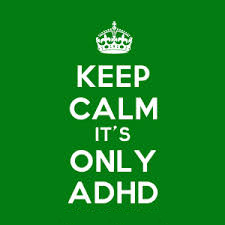Up to 5% of school-age children in the United States suffer from some level of Attention Deficit Hyperactivity Disorder (ADHD).
Research investigators at the Vanderbilt University Medical Center have discovered that certain alterations in the brain’s “dopamine transporter” make the brain behave as if amphetamines are present and cause the transporter function to “run backward.” Researchers suggest that, when the transporter runs backward, it begins to behave as normal transporters do when amphetamines or “speed” is present – altering normal dopamine signaling functions and contributing to the symptoms of ADHD. (Note: Amphetamine intake often causes hyperactivity, paranoia and psychosis in normal subjects.) “It’s like these kids are on amphetamines all the time,” said Aurelio Galli, Ph.D., an investigator in the center.
Scientific explanations aside, if you are a parent of an ADHD child, you may find that using some of the communication styles suggested below might help to partially counter-act this “speed-like” behavior pattern in your child.
When Your ADHD Child Succeeds in “Pushing Your Buttons:” There are numerous ways to work with your ADHD child to increase appropriate behaviors and crank back potentially disruptive behavior patterns.
- Step back and analyze how you communicate with your child. Do you make direct eye contact when giving an instruction? Do you initiate loving physical contact when speaking with your child?
- Do you check to be sure your child fully understands what you are asking him/her to do? (Try asking “tell me what it is I want you to do.”) If you feel your child is still not understanding what they are being asked to do, help them talk through the situation before beginning a task. One idea is to go over the steps needed to complete what you are requesting your child to do – you might want to try this both before the activity begins and while it is in progress.
- Provide instructions in verbal, written and visual form. Perhaps a “chore chart” or a checklist or even a simple flow-chart might help to clarify your instructions for your child. And, if you create these charts and lists with your child, you might find another layer of communication opportunities you haven’t previously seen.
- Be relentlessly positive. Work at finding everything that is great about your child. Don’t be afraid to use and overuse the phrases: “Great job!” “Thank you! You’re being very helpful!” and “I’m very proud of you.”
- Avoid lecturing you child. It’s easy to do – as a parent, you feel your child is not listening to you and, therefore, not understanding what you are trying to teach. Listen to yourself and how you communicate with your ADHD child. Do you “rant” and lecture or do you calmly present information, opportunities and expectations?
- REMAIN CALM. Your ADHD child will experience meltdowns and tantrums from time to time. Try remaining calm in the face of negative challenges and adversarial situations your child throws in your direction. Let them know that, even though their world is out of control at the moment, yours is not and that you will be happy to sit and wait for them to calm down and be ready to talk quietly and solve whatever problem caused the meltdown in the first place.
Finally, as you remain positive and calm in the face of what feels like the perfect storm, remember: “Raising a child with ADHD is not like traditional child rearing. Normal rule making and household routines can become almost impossible, so you will need to adopt different approaches. It can be frustrating and disheartening to cope with constant impulsive behavior from your child. But there are ways to make life easier.” (From “Parenting Tips for ADHD,” Healthline, Eloise Porter and Brian Kraus, December 19, 2014.)
